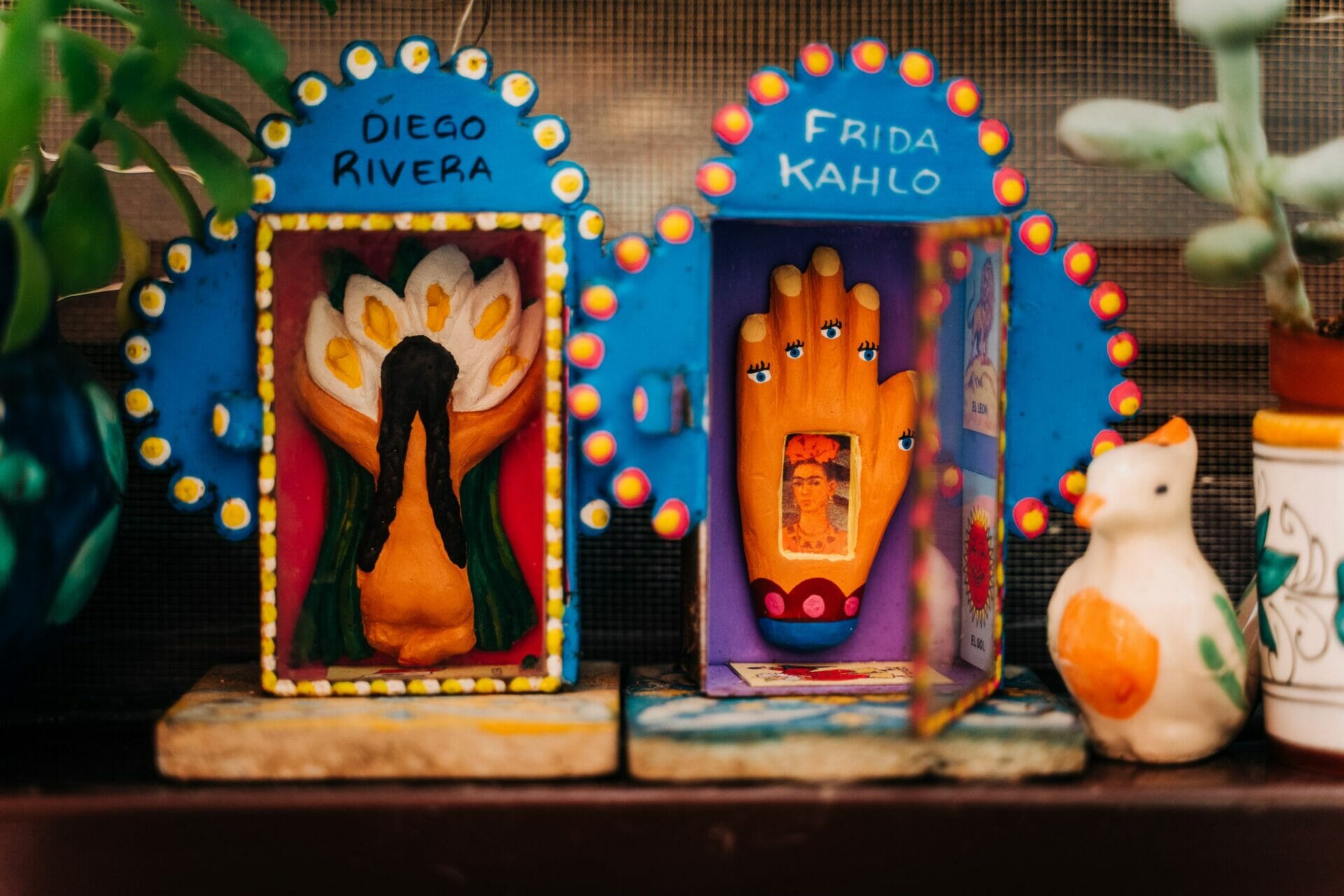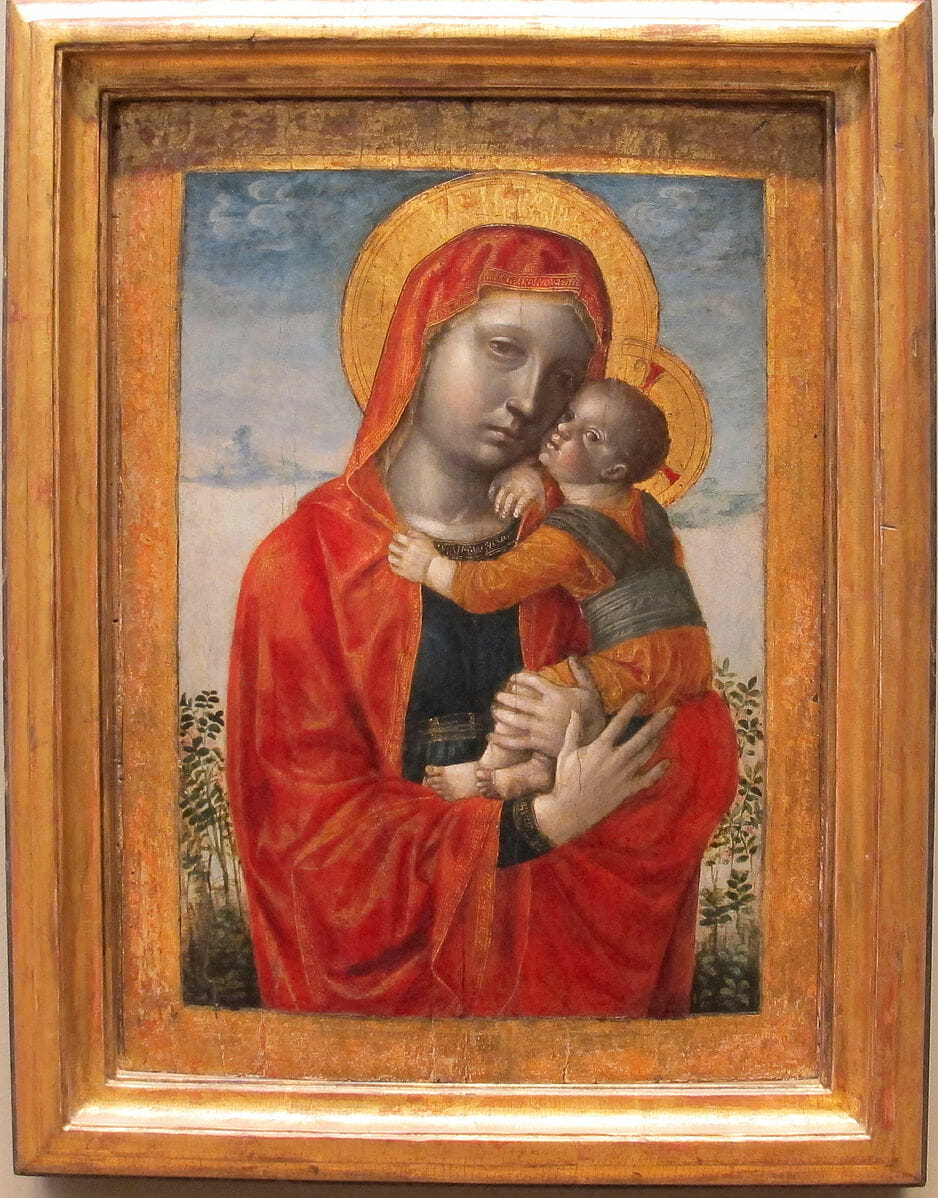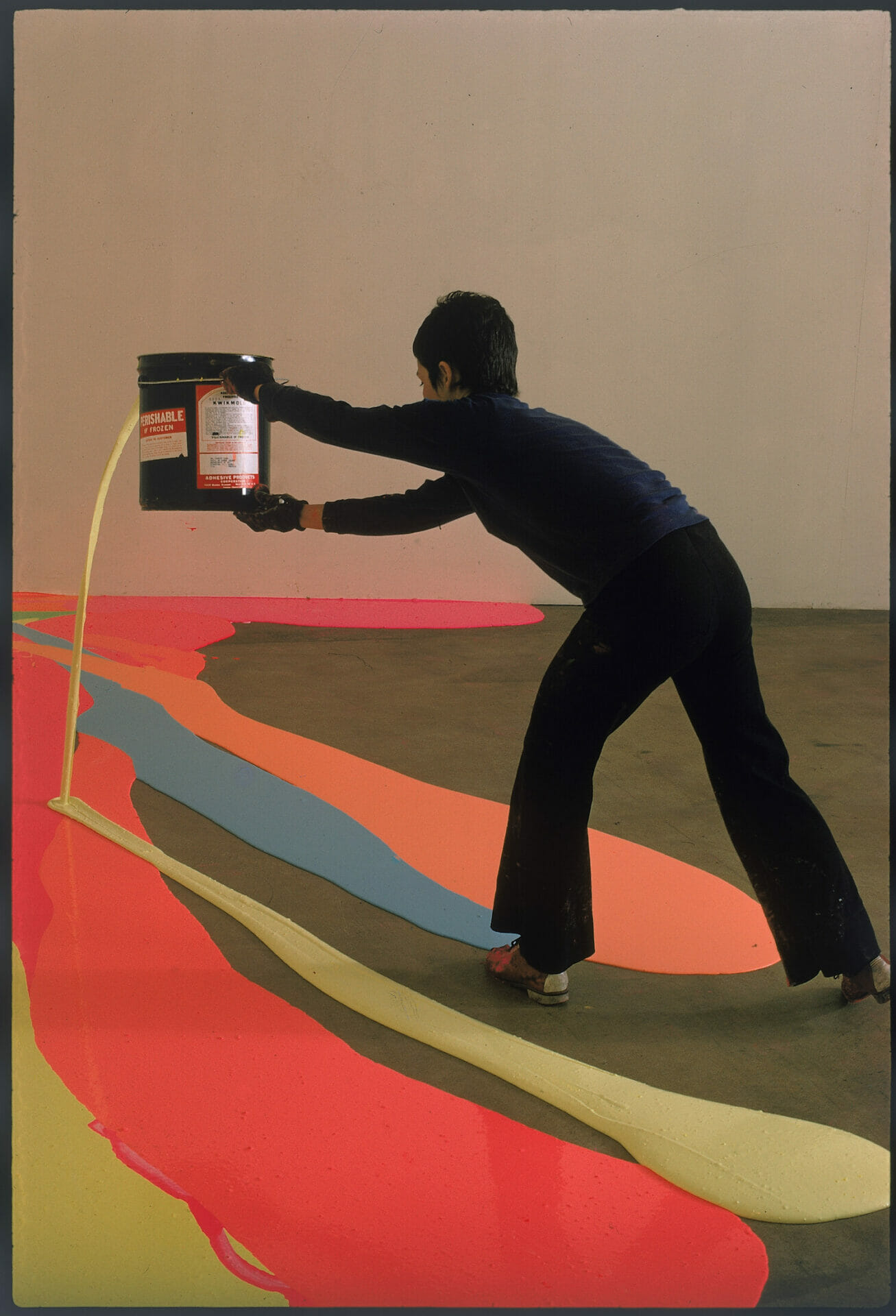
Patssi Valdez's Forbidden Fruit | The feminine and the sacred
Artist
Year
Country
By
Patssi Valdez’s 1991 Forbidden Fruit is an exploration of the feminine and the sacred in Mexican American popular spirituality and folk traditions.
Valdez is a Chicana artist. The Chicano movement was a social and political movement born between the 1940s and 1950s as a collective effort from Mexican people living in the United States who demanded equal rights. It grew substantially in the 1970s and 1980s. Valdez was also a member of the collective group called Asco. This was active between 1972 and 1987 and was originally comprised of Valdez, Harry Gamboa Jr., Gronk, and Willie Herrón III. Asco literally comes from the Spanish world, meaning “disgust.” The Los-Angeles-based collective took its stance from the revulsion towards the horrors of the Vietnam war and the unfair treatment of Latin American communities in the United States.
Asco particularly focused on the Mexican-American community in Los Angeles, with which most of its members identified. Murals and different forms of performance art were Asco’s preferred means of engaging with the local Chicano communities in the city. Asco is considered the first Chicano Performance and Conceptual art movement in the United States. Their performance protests against the Vietnam war, such as the 1971 Asco’s Stations of the Cross, in which members of the group performed collective mourning of Vietnam and Chicano victims using Christian symbols, is one of their most well-known pieces.
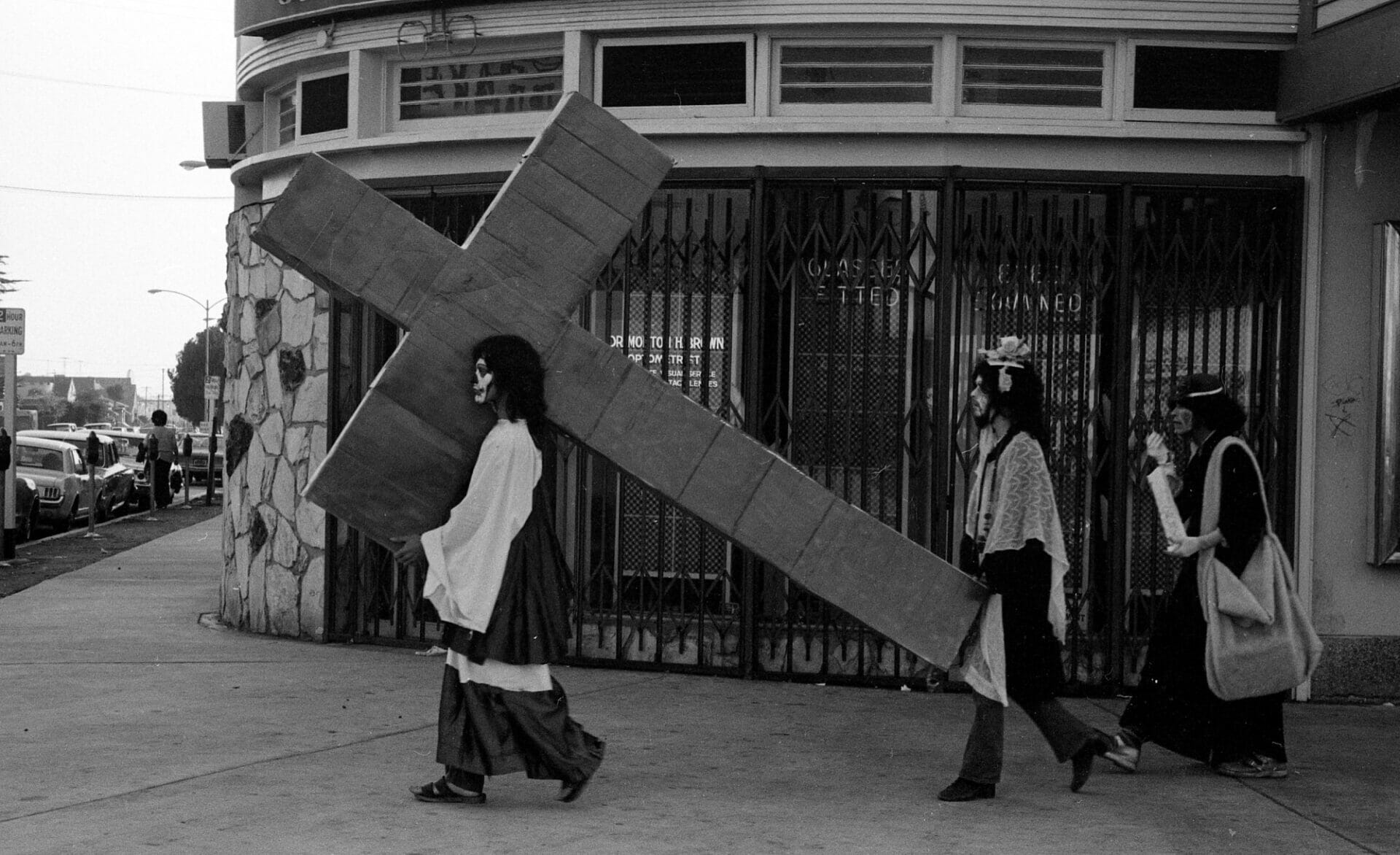
Traditional Mexican sacred altars
After Asco, Valdez stood out among Chicano artists for her focus on feminist themes. Her work frequently focuses on Chicana women’s status within society. In Forbidden Fruit, Valdez constructs a rich and dense image where female figures appear as precious jewels. Set in a golden frame, the composition is re-framed in an open red curtain.
By framing it thus, Valdez is also referencing the Mexican tradition of building home religious altars. Famously linked to the Day of Death, the Dìa de Los Muertos, Mexican home altars are closely tied to female authority in the family. It is women who compose them and take care of them. In a highly macho environment such as the traditional Mexican family, the religious altar is one of the few feminine spaces.
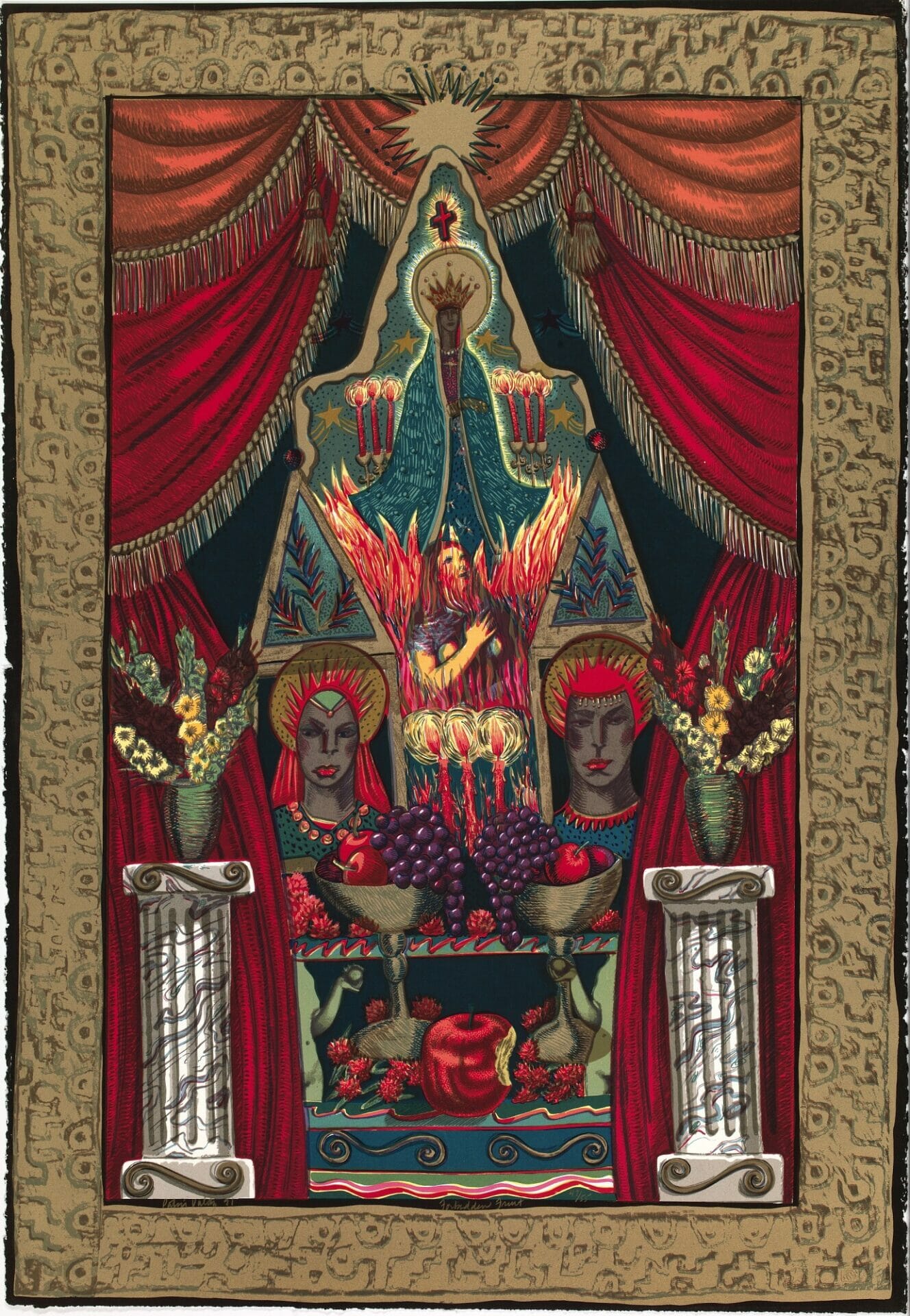
Forbidden Fruits and the feminine figure
In Forbidden Fruit, Valdez references the episode in the Bible book of Genesis where God prohibits Adam and Eve from eating the forbidden fruit. This fruit, wrongly thought of as an apple due to a misinterpretation of the Hebrew text, is referenced by Valdez in her print.
A half-eaten apple lies in the lower part of the composition, along with other fruits. Grapes, apples, and bananas overflow from the baskets containing them, as in the Dìa de Los Muertos altars. Overall, the richness of fruits is mirrored in the colors and texture of the print.
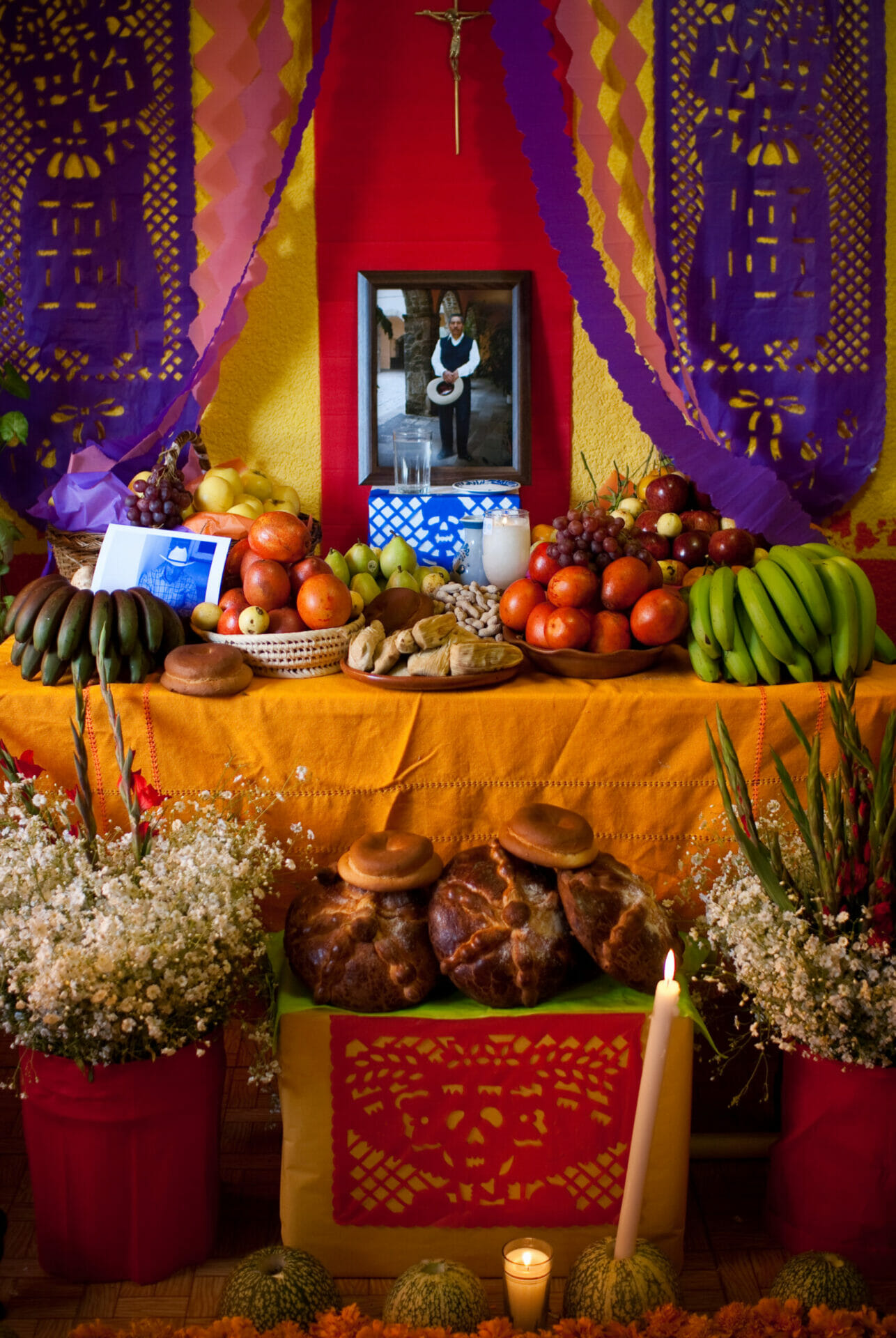
Image courtesy of Eneas de Troya, via Wikimedia Commons
Two views of the sacred female figure
In the print, the feminine and the female are shown in conflicting ways. Valdez references two views of the female figure in the Judaeo/Christian tradition. The first one refers to the book of Genesis, where the woman – represented by Eve – is closely linked to sin.
In the middle part of the print, two women’s bodies are holding the forbidden apple, and, in the central-upper part of the print, a naked woman is shown burning in flames. The second view opposes the first one. Sin and sanctity are two faces of the same coin when referring to the feminine figure in the Judaeo/Christian tradition. The woman burning in flames can refer to a mystic whose faith is displayed figuratively as a burning fire. Saint Teresa of Avila, a Spanish noblewoman who had godly visions, described her encounter in these terms:
I saw in his hand a long spear of gold, and at the point there seemed to be a little fire. He appeared to me to be thrusting it at times into my heart, and to pierce my very entrails; when he drew it out, he seemed to draw them out also, and to leave me all on fire with a great love of God.
Santa Teresa de Ávila. “Libro de su vida“. Escritos de Santa Teresa.
This passage inspired the baroque sculptor Gian Lorenzo Bernini in his representation of the Saint for the Cornaro Chapel, Santa Maria Della Vittoria, Rome.

Image courtesy of Livioandronico2013, via Wikimedia Commons
Virgin of Guadalupe
On the upper part of the print, Valdez depicts the Virgin Mary. A cloak envelops both the Virgin and the figure of the woman below, tying the two together in a fraternal embrace. Valdez refers to the Virgen of Guadalupe in her print through the Virgin’s dark skin. The Virgen of Guadalupe is the Virgin’s most well-known image in South America.
The Virgin of Guadalupe’s cult intertwines Christian traditions brought by colonizers in South America with indigenous religions. The Virgin Mary is said to have appeared to two indigenous men on the hill of Tepeyac, near Mexico City. The Virgin of Guadalupe’s sanctuary near Mexico City is of the world’s most visited pilgrimage sites.
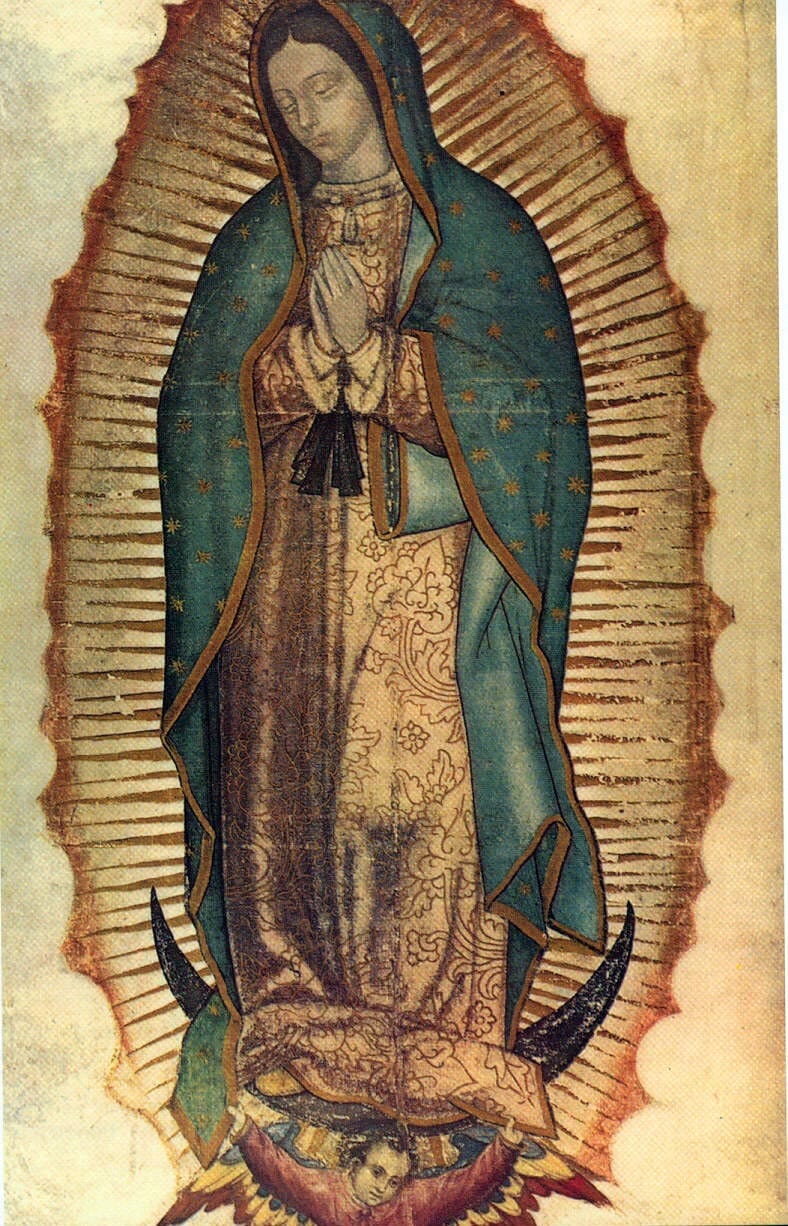
In Forbidden Fruit, Patssi Valdez reflects on the religious representation of the feminine and the sacred figure. She does so through the use of an iconography that links to both traditional Mexican home altars and sacred icons such as the Virgin of Guadalupe.
Tag
Buy a ☕ for Hypercritic







